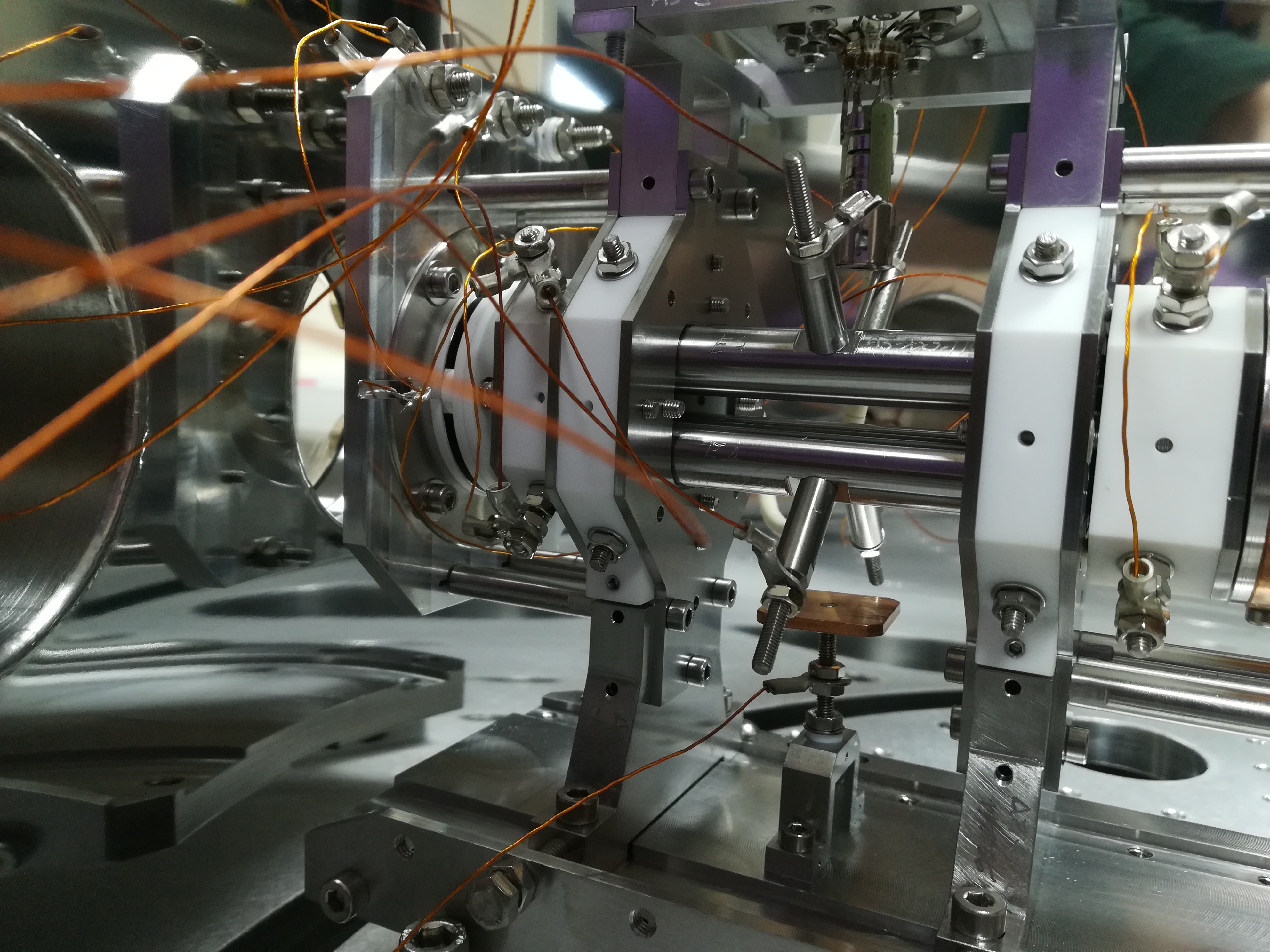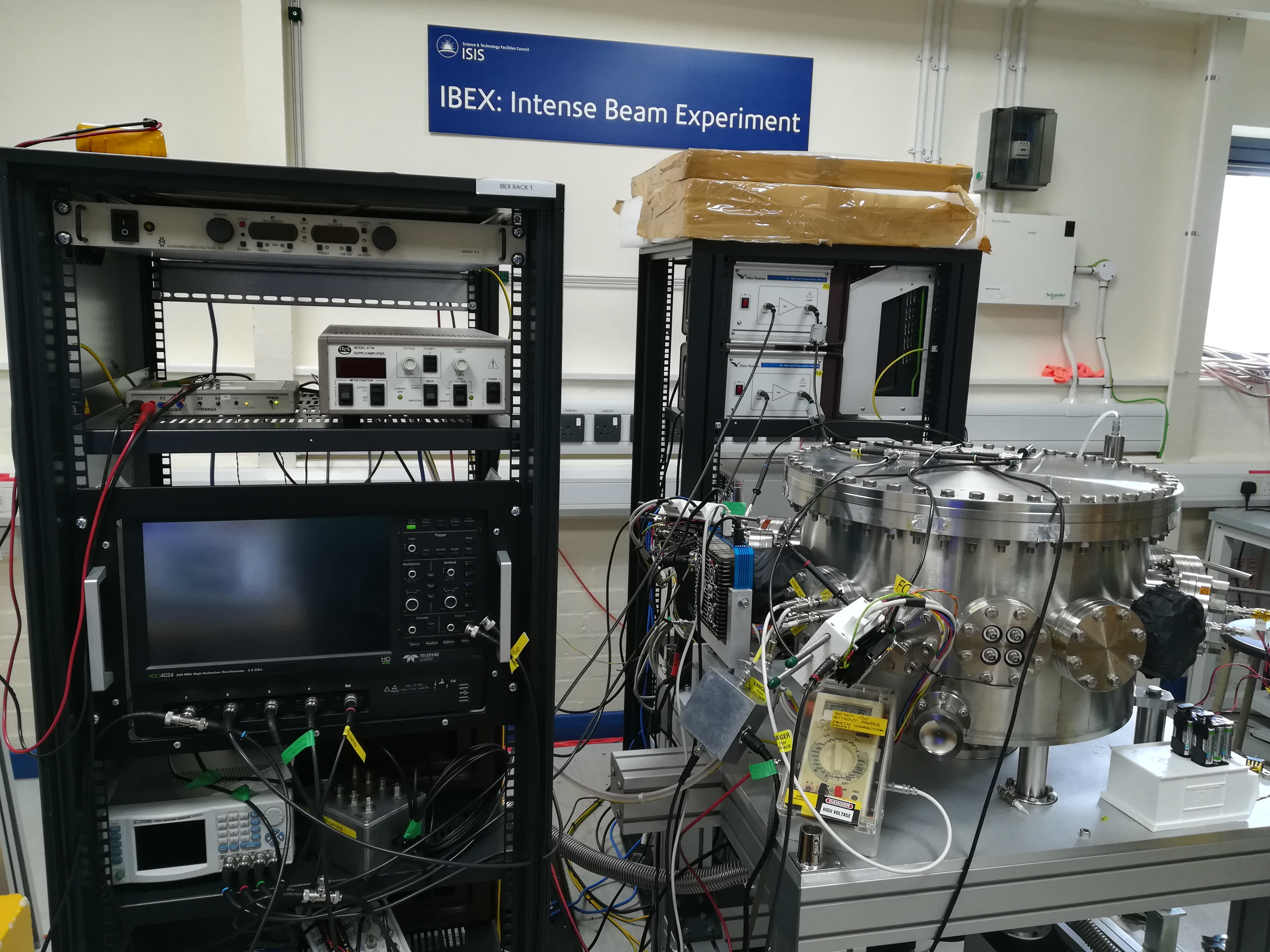Third year JAI student Lucy Martin works at the Rutherford Appleton Laboratory, in Oxfordshire, studying beams containing large numbers of particles:
High intensity particle beams are required in a number of applications - not just for particle physics. However, when a large number of particles are confined within an accelerator the forces between these particles can lead to collective effects and ultimately particle loss. We use a linear Paul trap, known as the Intense Beam Experiment (IBEX), to experimentally replicate the particle dynamics within a high intensity accelerator.

IBEX uses voltages applied to four cylindrical rods to create an electrical quadrupole, which confines argon ions in a small trapping region. The transverse motion of the argon ions in the trap is equivalent to the transverse motion of particles in a high intensity accelerator. The Paul trap is small, relatively inexpensive and can access a large range of tunes. Additionally, as particles are not accelerated the system is incredibly safe and activation of components due to particle loss is avoided. We use the IBEX trap to understand the effects which lead to beam loss and to test novel ideas for future accelerators, such as nonlinear integrable optics, in a relatively simple system.
